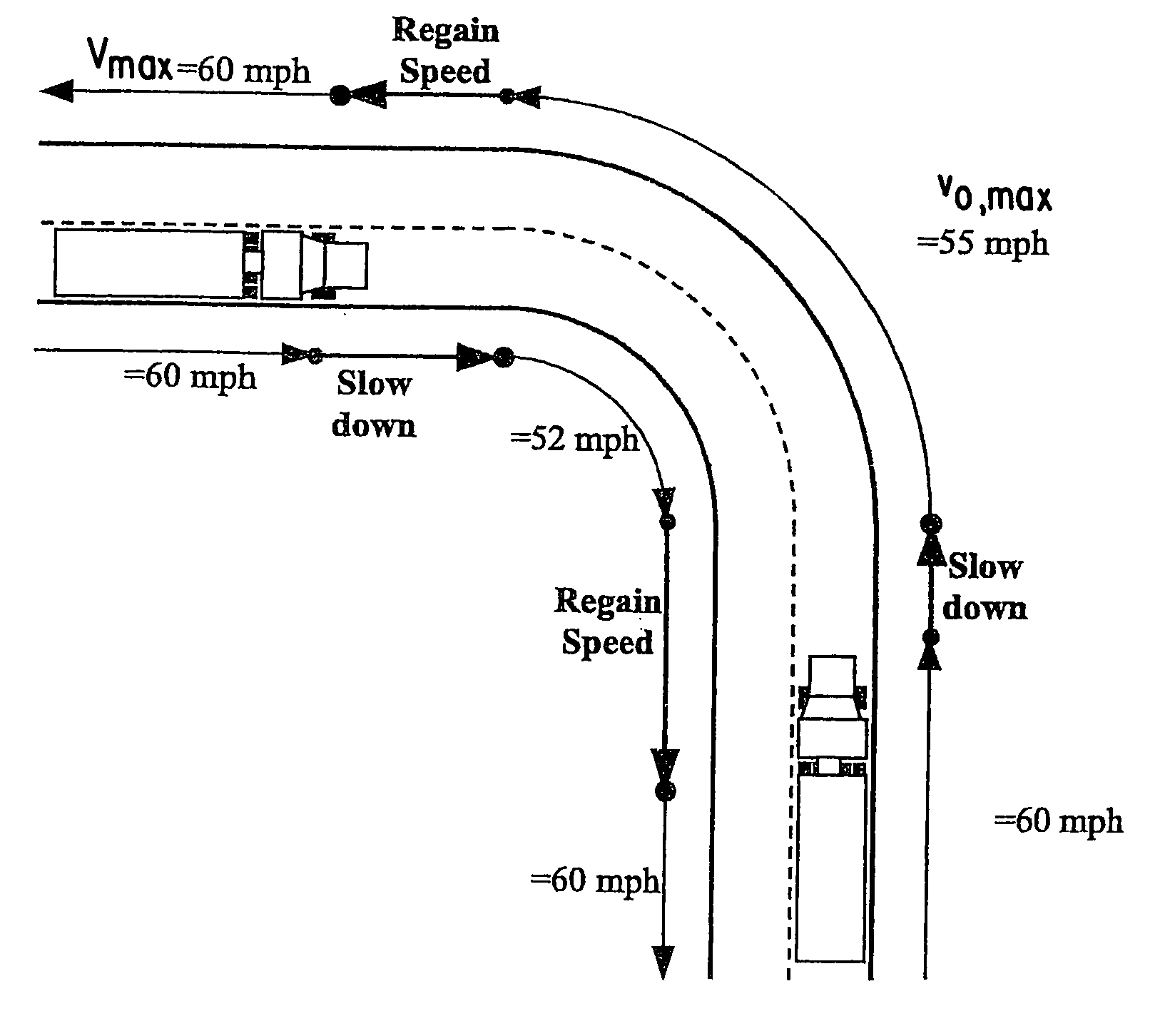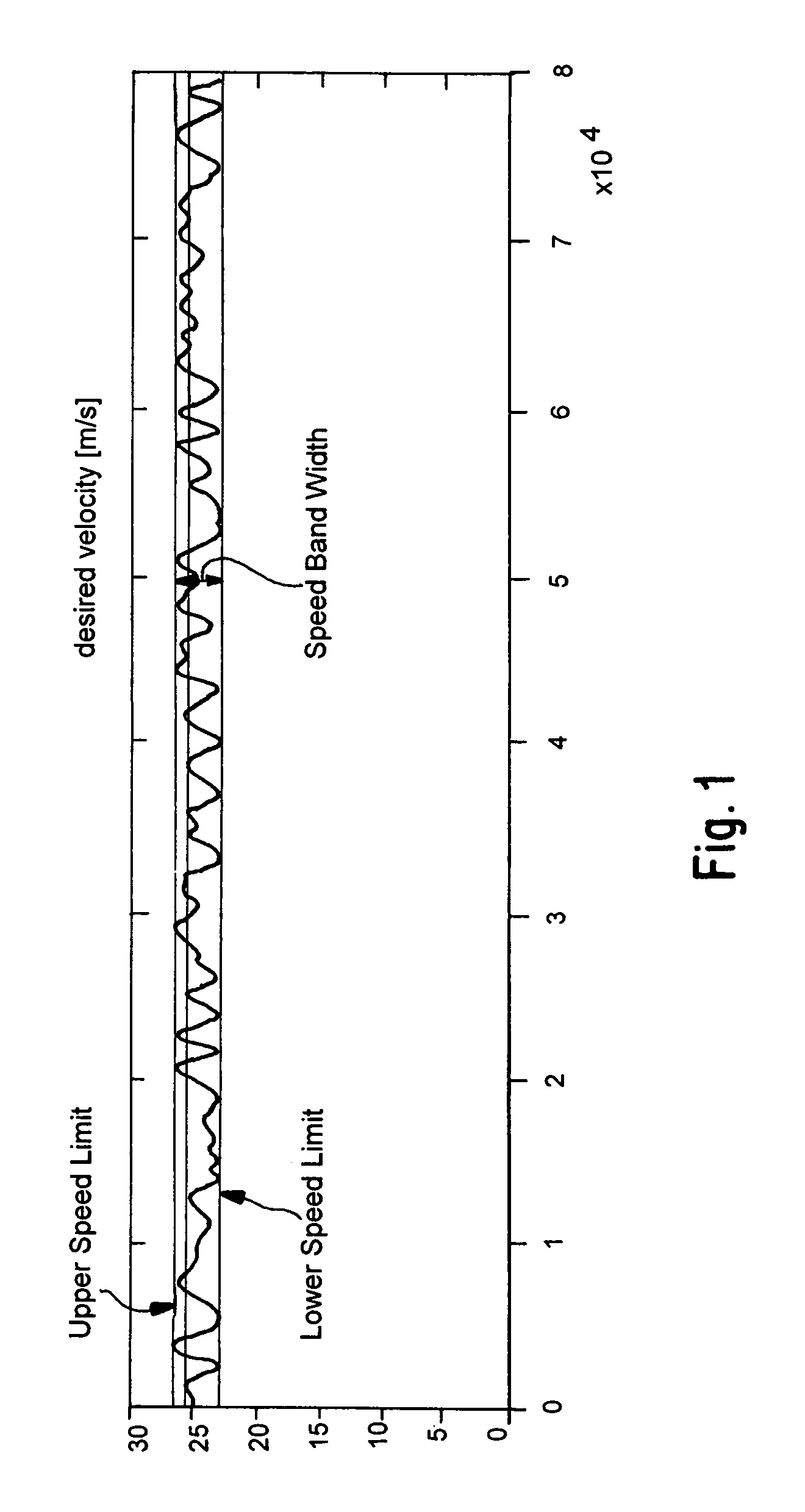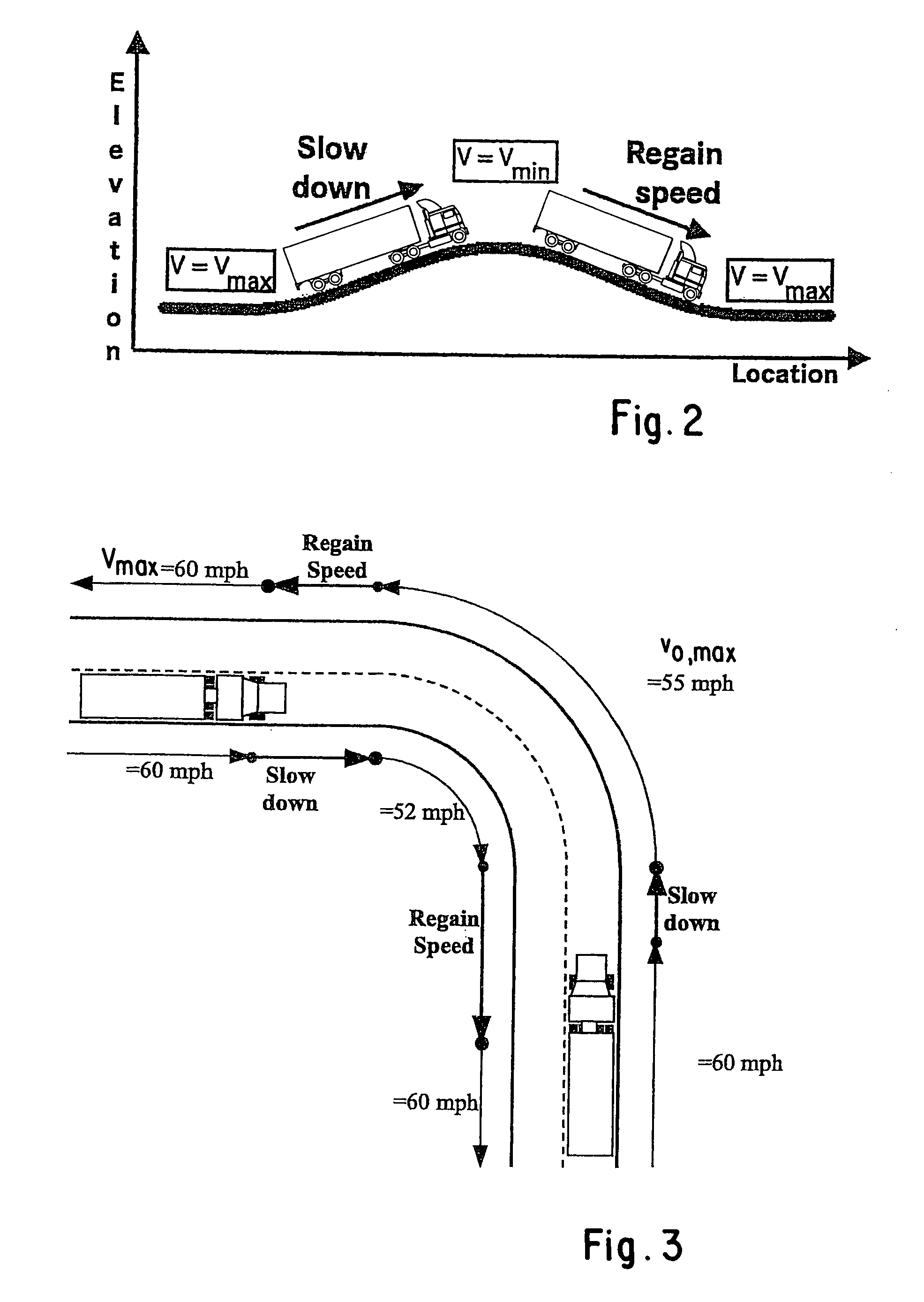Predictive speed control for a motor vehicle
a technology of pre-determined speed and motor vehicle, which is applied in adaptive control, process and machine control, instruments, etc., can solve the problems of vehicle speed, pick-up speed, environmental parameters regarding the route which are being traveled, etc., and achieve the effect of reducing vehicle operating costs
- Summary
- Abstract
- Description
- Claims
- Application Information
AI Technical Summary
Benefits of technology
Problems solved by technology
Method used
Image
Examples
Embodiment Construction
[0032]The basic idea of Predictive Cruise Control (PCC) is to replace or supplement the set speed of a conventional cruise control with a speed band. Forward-looking terrain information is used to determine, as a function of position, a desired speed inside the speed band (as shown in FIG. 1 for example), in order to maximize fuel savings. In the ideal case, the vehicle that is equipped with PCC slows down as it moves uphill until it reaches a minimum speed on top of the hill, and regains speed on the downhill part, thus completely converting the potential energy into kinetic energy. (See FIG. 2.) This strategy prevents unnecessary braking, or delays braking until it is unavoidable.
[0033]In addition, road curvature information can also be used to reduce vehicle speed in curves in order to avoid high lateral acceleration which can lead to vehicle rollover. As the vehicle approaches a curve, the speed can automatically be reduced as shown in FIG. 3.
The PCC System
[0034]A block diagram ...
PUM
 Login to View More
Login to View More Abstract
Description
Claims
Application Information
 Login to View More
Login to View More - R&D
- Intellectual Property
- Life Sciences
- Materials
- Tech Scout
- Unparalleled Data Quality
- Higher Quality Content
- 60% Fewer Hallucinations
Browse by: Latest US Patents, China's latest patents, Technical Efficacy Thesaurus, Application Domain, Technology Topic, Popular Technical Reports.
© 2025 PatSnap. All rights reserved.Legal|Privacy policy|Modern Slavery Act Transparency Statement|Sitemap|About US| Contact US: help@patsnap.com



